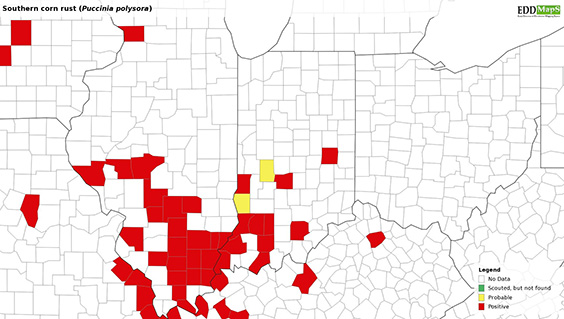
Soybeans We are starting to see a number of diseases in soybean across Indiana. This week in our plots in both northern and southern Indiana initial foliar symptoms of sudden death syndrome are making an appearance. In addition, we continue to see frogeye leaf spot and Septoria brown spot – the levels of both of these diseases were very low and our soybean are about R4 (beginning pod) to R5 (full pod). I suspect that if we continue to receive intermittent rain, we might start to see a bit more disease in soybean. Corn Tar Spot – We have confirmed 11 counties with active tar spot as of August 28 for the 2019 season. These counties all had a previous history: Elkhart, Jasper, Kosciusko, La Porte, Lagrange, Lake, Marshall, Noble, Porter, Pulaski, and St. Joseph (figure 1). I have included the 2018 tar spot map from Indiana for your reference[Read More…]










